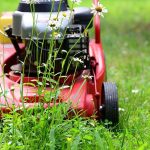Lawn care is an all-year affair, but it helps to know what to do during each season. Preparing for the specific conditions of winter, spring, summer, and fall in relation to your lawn is key to doing the necessary steps to ensure its full lushness and health every month!
Winter
The cold days may not be the best time for growing things, but they are the perfect start to planting them – including cool season grasses such as ryegrass, bluegrass, fescue, and bentgrass. To start with lawn care during winter, first make sure to mow your lawn. Get rid of fallen leaves, twigs, and other materials. Then, check whether you’ve got winter weeds. This will help you plan about controlling them come the springtime.
If you are not using grass seeds, don’t forget to use pre-emergents to minimize the formation of weeds. You may also consider the spot application of post-emergency herbicides, but always follow their label instructions and use ones which will complement your intended grass type.
In addition, start planning your landscaping. Winter is one of the most ideal times to plot where certain trees are growing, as well as removing plants that no longer fit your vision. When you have decided, start planting. Make sure to put your plants strategically: areas with enough space to let each of them grow, while also keeping them away from the worst of the sun and the rain in the coming months.
Spring
Winter may have passed, but its effects may not be entirely gone from your lawn. Check if its freeze and thaw cycles may have uprooted some of your plants; if so, push them down or add top soil for replanting. Rake your lawn free of dead leaves and other debris, and then give it a mow. Turn the blade of the mower to 3 inches for the first one, and then 3.5 for the remaining ones.
Do a soil test to determine what your lawn needs to be lush. You may employ the assistance of a professional who provides solutions for lawn care for this, but if you can’t, stick to the general rule of using 15 pounds of lime per 100 square feet of lawn area. After, start planting your beds.
Around April, you can reapply mulch around your plants. It’s also the best time to cut warm-season turf, but don’t overdo it. Set your blade such that the turf looks cut after you’re done, but you can’t see spots of soil throughout. For any subsequent cutting, it is best to cut away only the top third of the grass, and repeat the process once every week if your grass grows fast.
Summer
During dry days, watering and fertilization are necessary. Feed fertilizer into your lawn every 6 to 8 weeks, and then mow as needed. For watering, stick to using about 1.5 inches of water every week. Don’t forget to water your plants, too. And then maintain your lawn by being on the lookout for pests, dead spots, and other unpleasant evidences of insufficient health. Weed when you should.
Come August, if your lawn looks dry, do not cut it until it has rained or you have watered it.
Fall
Fall is the best time to aerate your lawn, which you can do with a garden fork. Just turn the soil over until the topsoil has spread out. Also, apply fertilizer during the start of the season. Mow up to three inches every now and then. Re-apply mulch around your plants, and transplant some if necessary. Then apply fertilizer again at the end of the season.
Sticking to these guidelines will help you keep your lawn look its best when it’s time to flaunt it to the rest of the neighborhood.
Sources:
Infographic: An Angie’s List Seasonal Guide to Lawn Care, AngiesList.com
Month to Month Garden & Lawn Care Checklist, SouthernLiving.com





